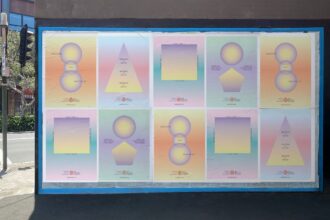They say that 4 out of 5 businesses fail within 5 years. Then within the next 5 years, another 4 out of those 5 will fail. Now, there definitely is a multitude of different reasons why this happens:
- Loss of funds
- Dissolution of partnerships
- Loss of interest
- The business just plain sucks
But for me, one key factor in that statement is what is the last few words: “within 5 years”. What this tells me is that small to medium businesses, no matter how profitable they are at a certain point, may die if they fail to keep up with the times.
What does this mean?
It means that whatever works for a business in year 1 or 2 will not necessarily work in years 5, 6 or 7. That’s because people change. Tastes change. Do you remember when flip-phones and elephant pants were a thing? They didn’t last long. But it was not the fault of the products.
People’s tastes and behaviors simply changed. But if those companies went down because of these changes, then in a way, it’s there fault for not being able to adapt accordingly. And my hope for the entrepreneurs who are reading this article is that you are able to open yourself up to new ideas and methods of growing your business to help you stay relevant at any period in time.
My hope is to help you discover what is working today so you may explore and implement it for your business. And one of those things which are working very well today is Facebook advertising.
What are Facebook Ads?
Quite simply, Facebook ads are ads or sponsored posts that appear on Facebook. You’ll see it as you scroll your news feed and find posts with the word “Sponsored” on the upper right. When you see a sponsored post, a business owner or advertiser paid Facebook for you to see that ad. And in this article, I want to share with you why Facebook Ads are awesome for small and medium business owners.
You get to choose who sees your ads.
I think one of the best features really of Facebook advertising is how you as the advertiser can pinpoint who you want to show your ads to. I guess the best way to talk about this is to actually show you how you’re able to do this. Check out the images below:

Let’s take a look at each one closely.

At the moment, we set it to target the whole of Asia. You can set this to target the whole world. Or if those are too big, you can target your country only. Still too big? You can target your region only. Still to big? You can target your city only. But if for example you are simply looking to only service your local neighborhood and targeting your city is still too big?
You can click on the ‘Drop Pin’ button and you can drop a pin on the map on where your business is located, and you can target just everyone within a 1-mile radius from you.


Let’s check out what this will allow you to target:

More demographics that you can target include:
- Education (level of education, what they studied, what school they came from)
- Financial (Income level but this is only for US audiences)
- Life Events (Getting married, getting engaged, moving, having a new job, etc.)
- Parents (This could be further broken down to the parents of children by age group like toddlers and teenagers)
- Relationship Status (Single, married, it’s complicated, etc)
- Work (Industry, Job Titles, Employers)
The last one in particular is something I always point to people who claim that Facebook ads will not work for them because they are a B2B company. I tell them that regardless if they are B2B, they can still reach their target audience on Facebook through work-related identifiers.

Now the ones you see above are the broader ones but there is a WHOLE lot more different interests to target and that is a whole different conversation in itself so we’ll save that for another article.

In that list, our usual favorites are targeting Expats (People who used to live in one country but are now in a different country), Engaged Shoppers (People who clicked on a “Shop Now” button anywhere on Facebook in the past 7 days) and filtering out people by the mobile device they use.
Now, you may be thinking, how does Facebook get all this data about it’s users? The simple answer is that we provide those information to Facebook. For one, details like our age, where we live, what school we went to, our relationship status, etc, these are information we provide on our profiles.
But more than that, here’s how we give Facebook information about us.
As individuals, we have our own interests. For me for example, I like Japanese food. Now these interests manifest themselves as behaviors. Particularly in this case, we express our interests through our different behaviors on Facebook. For example, because I like Japanese food I probably do any of the following:
- Watch videos on how sushi is made
- Like other people’s photos of Japanese food
- Check-in when I go to a Japanese restaurant
Now these actions are small indicators to Facebook that I like japanese food and now it profiles me as someone who likes that cuisine. So to keep me engaging with the platform, Facebook will keep on showing me posts about Japanese food because it’s relevant to me based on my behavior. And these posts include ads which Japanese restaurant owners set up targeting people like me.
You can follow up.
Now this is a feature which cannot be replicated by traditional advertising. If you’ve been around the digital marketing space for quite some time, you may be familiar with the term ‘remarketing’ or ‘retargeting’. Remarketing refers to the process of marketing to people who have engaged with you and your business in any way before.
Have you ever experienced checking out a product from an online store and when you exited that website, the store and the products you checked out kept popping up everywhere, whether on Facebook or on other sites.
That’s remarketing.
And with Facebook ads, you can follow up with people who:
- Visit any page on your website
- Have given you their information before
- Are in your email list or database
- People who have engaged with your Facebook or instagram page before
- People who watch a percentage of your videos on Facebook.
- People who saw your offer on your website but did not buy.
- People who messaged your page before
They say that it takes 5 to 7 touchpoints between a business and a customer before a transaction is made.
Being able to map out these touchpoints become very possible and predictable now because of Facebook’s ability to help you remarket to people based on an action they took before.
Facebook will help you
I know a lot of business owners and advertisers make it seem that Facebook is the enemy especially when results don’t materialize after spending a lot in ad spend. But in my experience, this is simply not true. In my opinion, Facebook has our best interest in mind as business owners.
Think about this.
If Facebook didn’t help us out and we end up losing money with no results, we’ll just give up on Facebook ads altogether. But if that happened, then Facebook will lose it’s main revenue source.
But if it does help us get the best possible results, business owners will see a return on their investment so we both win. And when we see massive results from Facebook ads, we’re driven to pour more money into our ads to generate more revenue and this results in additional revenue for Facebook as well.
We all win.
Here are some ways in which Facebook helps out us advertisers:
- Facebook has campaign objectives we can choose from that allow us to target people based on their behavior (For example, we can reach people who are likely to buy, likely to watch videos, likely to engage in Messenger, etc).
- Facebook has tools which allow business owners to run ads regardless of whatever assets they don’t have. (For example, if you don’t have a website, you can still generate leads through tools like lead ads which allow you to capture information without the need of a website)
- Facebook has planning tools which allow you to plan for ads including Audience Insights which allows advertisers to dig deep in researching their target audiences.
It’s cost effective. Traditional advertising has a huge reach and companies pay handsome amounts to get that reach. This is why small and medium business owners tend to zone out with the mere mention of advertising because traditionally, it was only meant for the big players.
But not anymore.
With Facebook, you can advertise for as little as $1 a day. It may be a bit more or a bit less depending on what country you are in but generally, $1/day is the minimum. Of course we highly recommend spending way more than $1/day but if you’re very unsure, you can at least allocate a small budget to test Facebook ads to see if you can get results in a small scale first before going all out on the budget.
Everything is within your control. Despite the wide reach of traditional advertising, there usually still are restrictions. Like for example, if your ad isn’t on TV or in the movies, you’re stuck with just an image to use for the ad.
Or if you have a billboard which has a misprint, you’d have to choose between having a wrong ad or having to pay for an empty ad space while you redo the whole thing all over again. But in Facebook ads, you have more control.
Whether you want a video or an image, it’s up to you. Whether you want a long ad or a short ad, it’s up to you. Whether you want an ad to have a high budget or low budget, it’s up to you. And when something isn’t working, you can simply turn off the ad in one click. If there’s an error, you can edit the ad on the spot. And the additional beauty of it is, if you’re not sure what to do, you can test them all and see what sticks without having to pay an arm and a leg.
You can measure exact results.
Finally, one of my ultimate favorites as a numbers nerd, the ability to track results accurately. I’m not hating on traditional advertising but let me just make one last comparison. Let’s say to increase your sales this quarter, you invest in ads on TV, Radio and Print and after that quarter, you saw a rise in sales.
Then it only makes sense that if you want to same results the next quarter, you reinvest in the same channels. But what if only one of those channels generate 80% of the sales? But because you weren’t able to track accurately, we attribute the sales to all channels and we spend on all of them again.
But if we knew that Radio generate the 80%, then chances are that in the next quarter, we’ll only go radio. But with Facebook ads, we can clearly track which ads the sales are coming from. Check out the screenshot below as an example:

Now the great thing about this ability to track is that we’re now also able to get demographic data which will allow us to make smart business decisions.
Check out the demographic breakdown below of the results from a cosmetics business we ran ads for in the Philippines.



Now imagine that all the physical stores of this business are all located inside Metro Manila. When they choose to expand to different regions, they can use the reports generated by Facebook Ads to see where their sales outside of Metro Manila are coming from the most so they can start there.
Conclusion
I’ve been doing Facebook ads for quite some time now for a wide range of businesses all over the world. Apart from that, I’ve followed the journey of the company particularly with the whole Cambridge Analytica issue from 2018. And one thing is clear for me, Facebook is not going away.
More than that, it will keep on growing and keep on improving. It will aim to keep people in the platform happy so they spend more time and attention on the platform. And as business owners, this is a great opportunity to meet our customers where they are at.
So if you’re looking to stay relevant, go with what’s working today. And today, Facebook ads work very well. We look forward to seeing your ads in our news feeds.
















